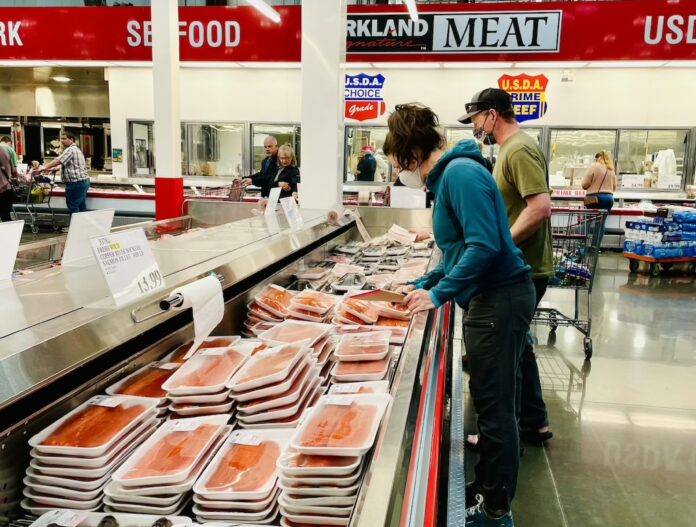Salmon remains one of the “bright spots” for US retailers despite its price rising to heights not seen in other seafood, leading a market analyst to believe the recent downward trend in prices will help restore lost ground.
Data from market research firm IRI shows fresh salmon sales were up 9 percent over the past 12 months but unit sales went down 4 percent as price per lb rose 14 percent over the period.
“Salmon is more than a $2.5-billion-dollar category here in the US – it’s a big deal. It is the anchor in the fish case,” said Chris Dubois, a senior executive at Chicago-based IRI.
“What we’re seeing is a lot of retailers now are using it as a way to bring in shoppers into the store. We haven’t seen this big price increases in other species as much as we’ve seen in salmon, but it continues to be one of the most important categories in the meat and seafood cases.”
Recent trends show salmon is seeing increased sales in discount stores, which Dubois attributed to the deliberate decision to offer a limited range of species – salmon often being one of them – and the effective product presentation.
“You can find really good fresh salmon, for instance, at Aldi. But you can also find organic chicken and organic beef, there. While discounters may have the ‘discount’ title in there, they are very specific in terms of which items they think are really going to sell to consumers,” he said.
“Costco’s salmon is another great example. They do fantastic business in salmon. They’re probably the largest total seller of salmon in the United States.”
He said the brisk traffic at club stores like Costco makes the product really fresh because of the quick turnover.
“Just because you’re buying it at a club or a small-format discount store doesn’t mean it is lower quality. In many cases they are really, really fresh because they get the fast turns and they only have a few items they have to deal with. They’re not trying to sell you 50 different types of fish. They maybe are selling just a couple and it becomes more pretty straight-forward to stock,” he said.
Another trend is the further increase in online shopping, driven by inflation rate not seen in four decades. American consumers have upped their online shopping in order to save on fuel and rein in their spending. Fresh food, including salmon and other seafood, still benefits from the growth but not as much as non-perishable items, noted Dubois.
“Fresh food eCommerce especially for pick up at the store or delivery from the supermarket truck to a person’s house is continuing to grow but the growth rate for seafood is much less.”
Dubois said the easing of global supply chain problems should see prices come down and restore seafood sales. “I’m very optimistic over the next year. We’ll see seafood volume come back. Dollar sales are strong but I expect volume to come back as well,” he concluded.

